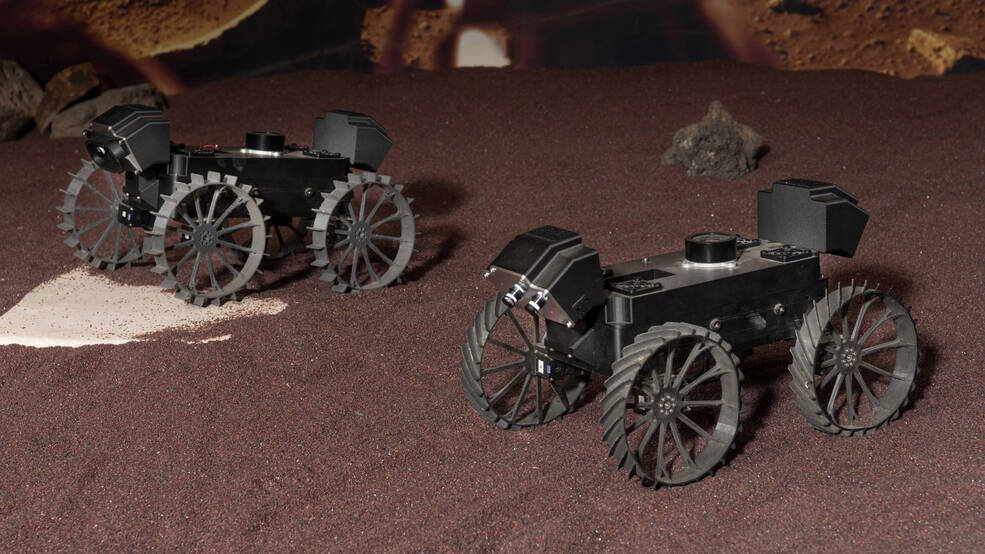NASA’s Mini Autonomous Rovers Set to Explore the MoonNASA’s Mini Autonomous Rovers Set to Explore the Moon
The team of small-scale robots will be tested for their efficacy in off-planetary exploration

NASA is sending three autonomous, miniature rovers to the moon, in a test to see how well they can operate and communicate with one another without human input.
The Cooperative Autonomous Distributed Robotic Exploration (CADRE) mission will be used to inform future developments of autonomous robots for off-planet exploration, in particular the use of multiple robots to assist astronauts in their missions.
The rovers are set to arrive on the moon’s surface in 2024, when they will then embark on their mission of mapping the lunar surface using cameras and radar, creating a 3D rendering of the terrain.
“Each about the size of a carry-on suitcase, the four-wheeled rovers will drive to find a sunbathing spot, where they’ll open their solar panels and charge up,” NASA said. “Then they’ll spend a full lunar day – about 14 Earth days – conducting experiments designed to test their capabilities.”
During the missions, the rovers will elect a “leader” among them to assign tasks, with each rover then autonomously assessing how to safely complete its assigned task.
“The only instruction is, for example, ‘Go explore this region,’ and the rovers figure out everything else: when they’ll do the driving, what path they’ll take, how they’ll maneuver around local hazards,” said Jean-Pierre de la Croix, CADRE’s principal investigator. “You only tell them the high-level goal, and they have to determine how to accomplish it.”
Among the tasks assigned to the rovers, is asking them to drive in formation while relying on sensors to avoid obstacles, as well as identifying an exploration path of their own choosing to create a topographic map.
The project will also assess how well the team would adapt if a rover stopped working.
The rovers’ actions will be monitored by a team back on Earth.
“Our mission is to demonstrate that a network of mobile robots can cooperate to accomplish a task without human intervention – autonomously,” said Subha Comandur, CADRE’s project manager. “It could change how we do exploration in the future. The question for future missions will become: ‘How many rovers do we send, and what will they do together?’...It could be a game-changing way of doing science.”
About the Author
You May Also Like


.jpg?width=700&auto=webp&quality=80&disable=upscale)
.jpg?width=700&auto=webp&quality=80&disable=upscale)

.jpg?width=300&auto=webp&quality=80&disable=upscale)


